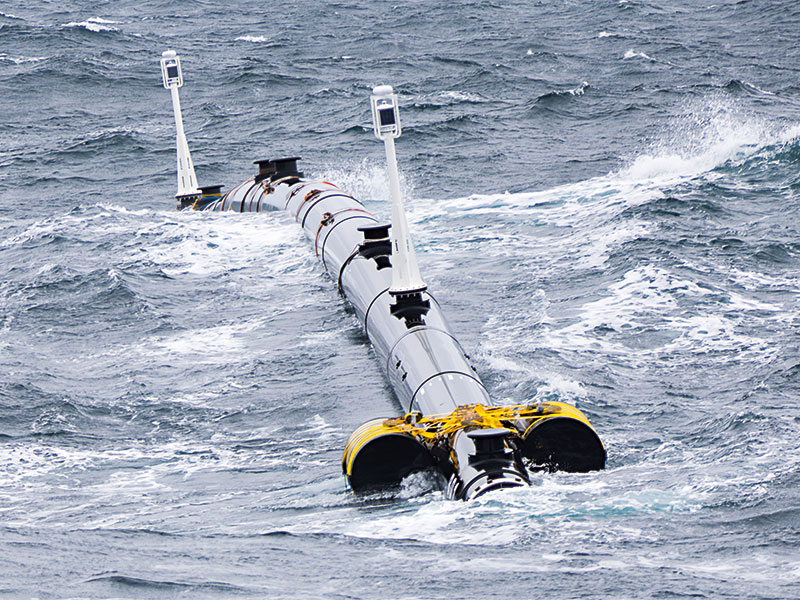Wind and wave power is driving a new mass ocean cleanup operation
The Earth’s oceans are littered with plastic. While removing such vast quantities of waste won’t be easy, a new proposal powered by the wind and waves alone might just do the trick

The Ocean Cleanup Project faces a number of obstacles in its vital work to tackle plastic pollution in our oceans
The war on plastic is well underway. In January, the European Union declared that all packaging across the bloc must be reusable or recyclable by 2030. Businesses all over the world are getting on board too, targeting single-use plastics in particular.
Part of the reason this cause has captured the imagination of so many is the growing public awareness of the damage plastic is causing to marine life. According to the Ellen MacArthur Foundation, more than eight million tonnes of plastic enters our oceans every year. By some estimates, there will be more plastic in our seas than fish by 2050.
1.6m sq km
Estimated surface area of the Great Pacific Garbage Patch
Cutting down our plastic use will help, but it won’t remove the huge quantities of plastic that have already entered the marine ecosystem. Inspired by this problem, Dutch inventor Boyan Slat founded the Ocean Cleanup in 2013 to tackle the largest concentration of waste in our oceans, the Great Pacific Garbage Patch (GPGP).
Slat’s organisation now has more than 70 members of staff and has received millions of dollars of investment, but cleaning up a mass of plastic covering an estimated surface area of 1.6 million square kilometres still represents a huge challenge.
Taking out the trash
Over the years, Slat has refined the Ocean Cleanup system extensively. Today, it simply consists of a 600-metre-long floater and a three-metre-deep skirt attached just below the water’s surface. Wind, waves and the ocean current propel the passive, free-floating system.
And, as the current largely dictates the GPGP’s movements, the Ocean Cleanup system moves faster than the plastic it seeks to remove. This allows the underwater skirt to concentrate the waste into a single area.
By 2040, an entire fleet of clean-up systems could have removed 90 percent of the oceans’ plastic
Once natural forces have accumulated the plastic in the centre of the Ocean Cleanup system, a garbage removal vessel is dispatched to collect the plastic and take it back to land to be sorted and recycled.
This process only needs to take place once every few months in order to rapidly reduce the size of the GPGP. Simulations indicate this method could remove 50 percent of the plastic in just five years.
Sea change
On September 8, the Ocean Cleanup project finally launched, setting sail from San Francisco to embark on its 450km journey to the test location. Once there, however, it will face a number of challenges.
8m tonnes
Estimated amount of plastic entering our oceans each year
Although there are no heavy-traffic shipping routes currently passing through the GPGP, there is potential for the Ocean Cleanup system to encounter an ocean vessel. In order to prevent collisions, the system is equipped with lanterns, radar reflectors, GPS and the automatic identification system used extensively for maritime navigation.
In addition, the US Coast Guard has earmarked the area as a special-operations zone and will continue to inform mariners of the project.
As well as passing ships, the Ocean Cleanup system will have to contend with the violent weather that is to be expected in the middle of the Pacific Ocean. In order to safeguard against even the most testing storms, the apparatus has been designed with flexibility in mind, ensuring it can follow high waves and strong currents without experiencing undue strain.
2050
The year by which some expect plastic to outstrip fish in our oceans
The Ocean Cleanup team’s ambitions extend beyond the Pacific Ocean, however. Ultimately, Slat and the rest of the crew aim to tackle waste accumulated in other ocean gyres – the global systems of ocean currents where the majority of the Earth’s plastic waste ends up.
By 2040, an entire fleet of clean-up systems could have removed 90 percent of the oceans’ plastic. For a free-floating system that only relies on natural forces for its movement, that would be a truly remarkable achievement.













